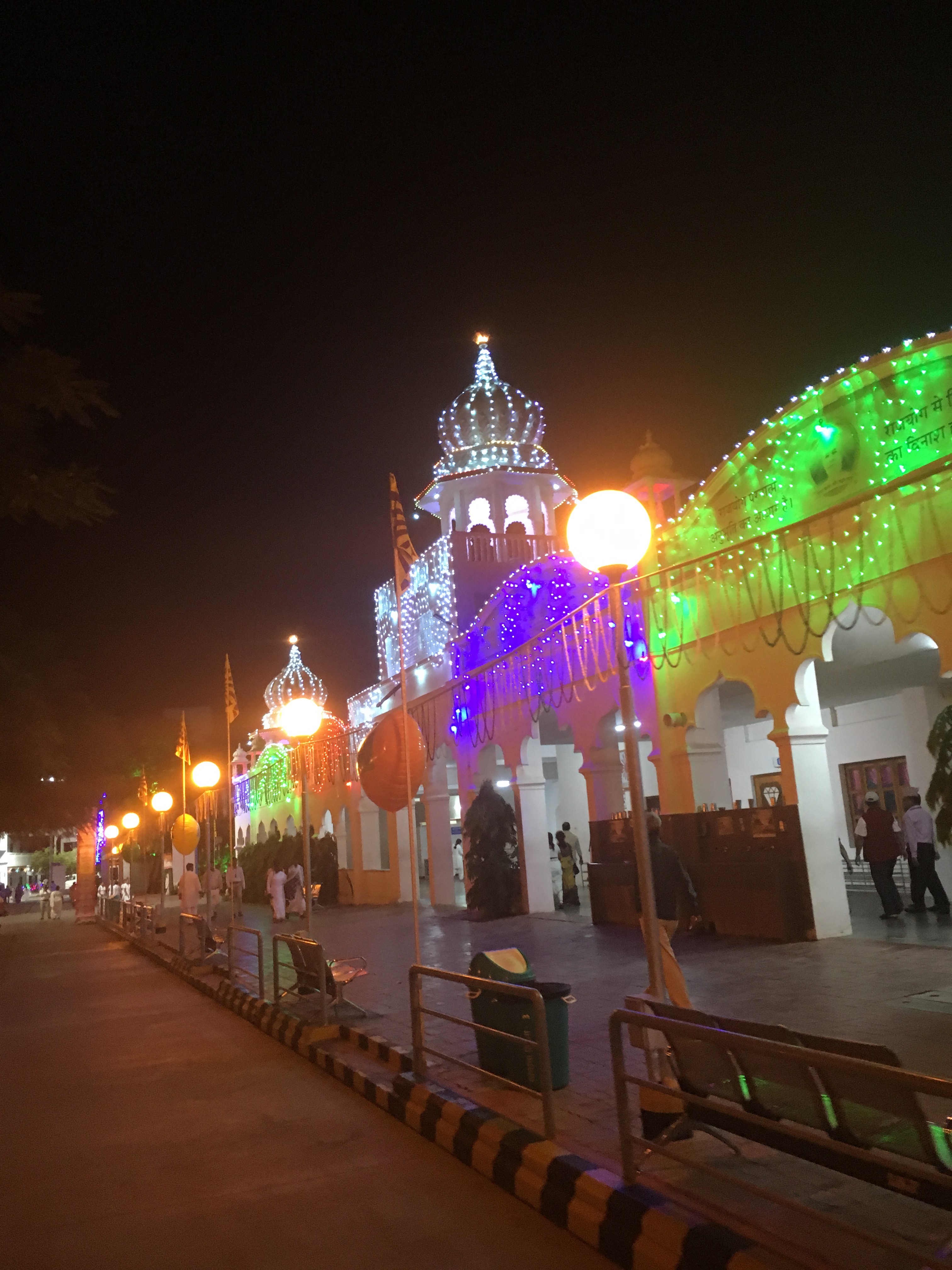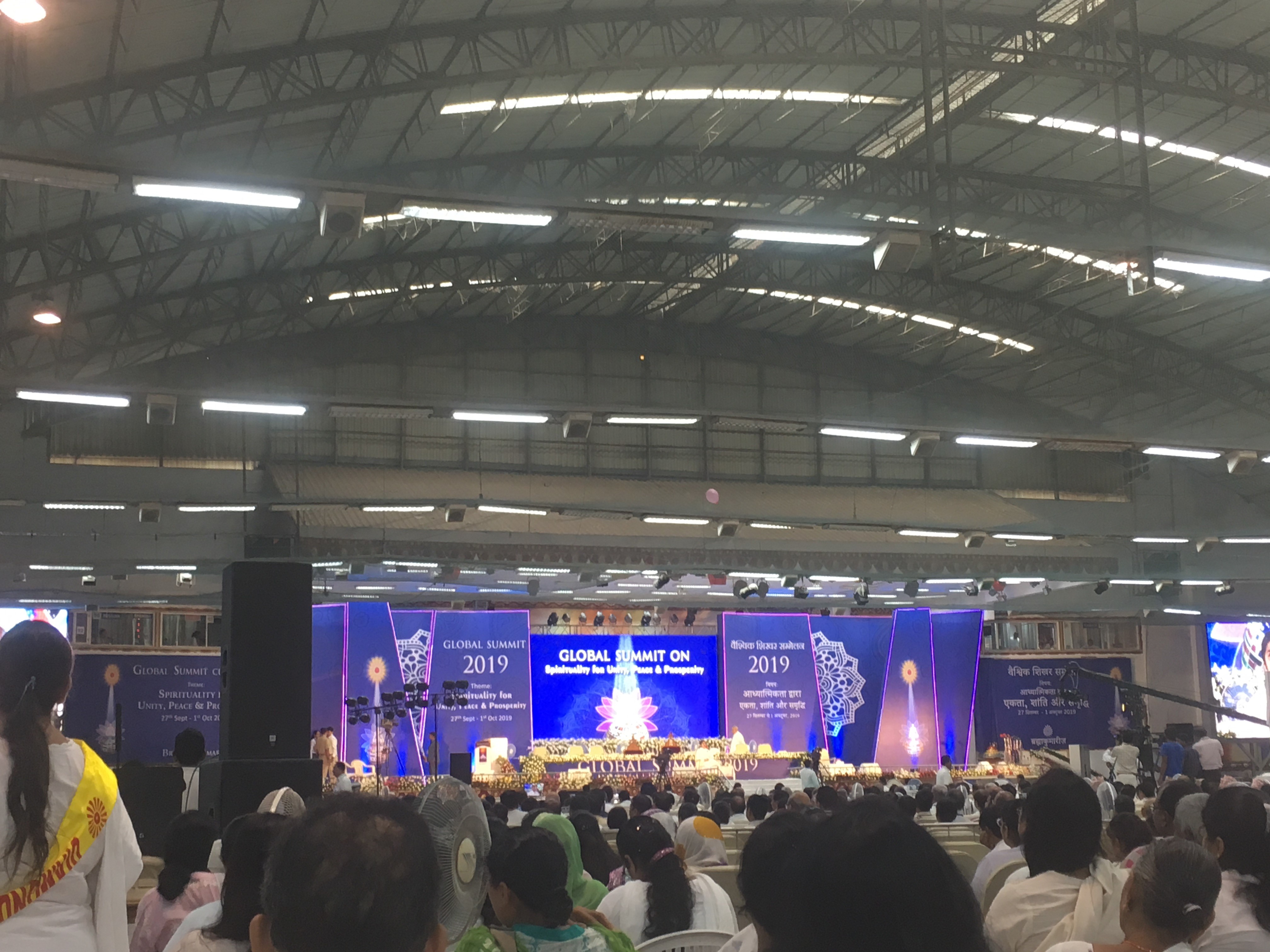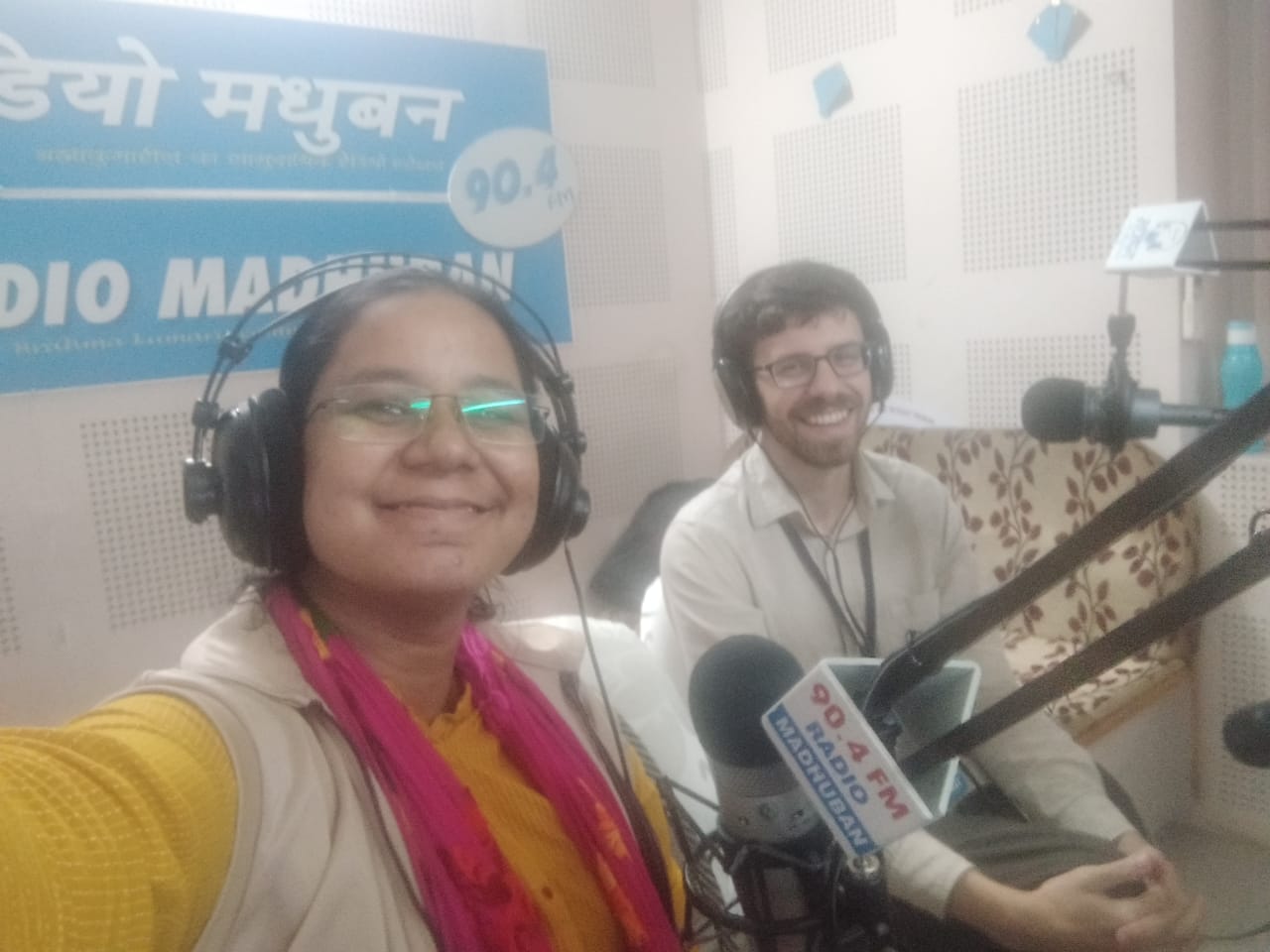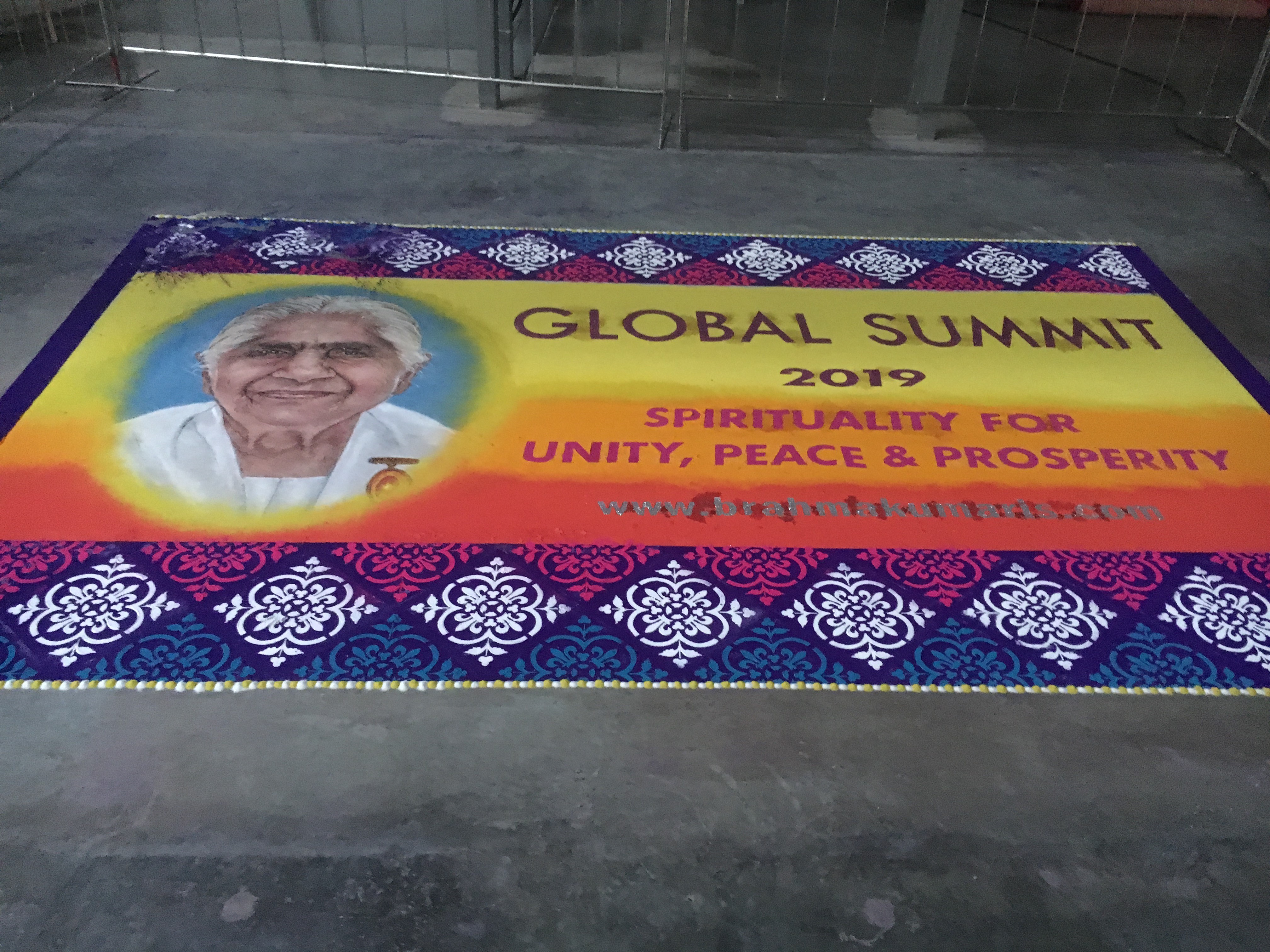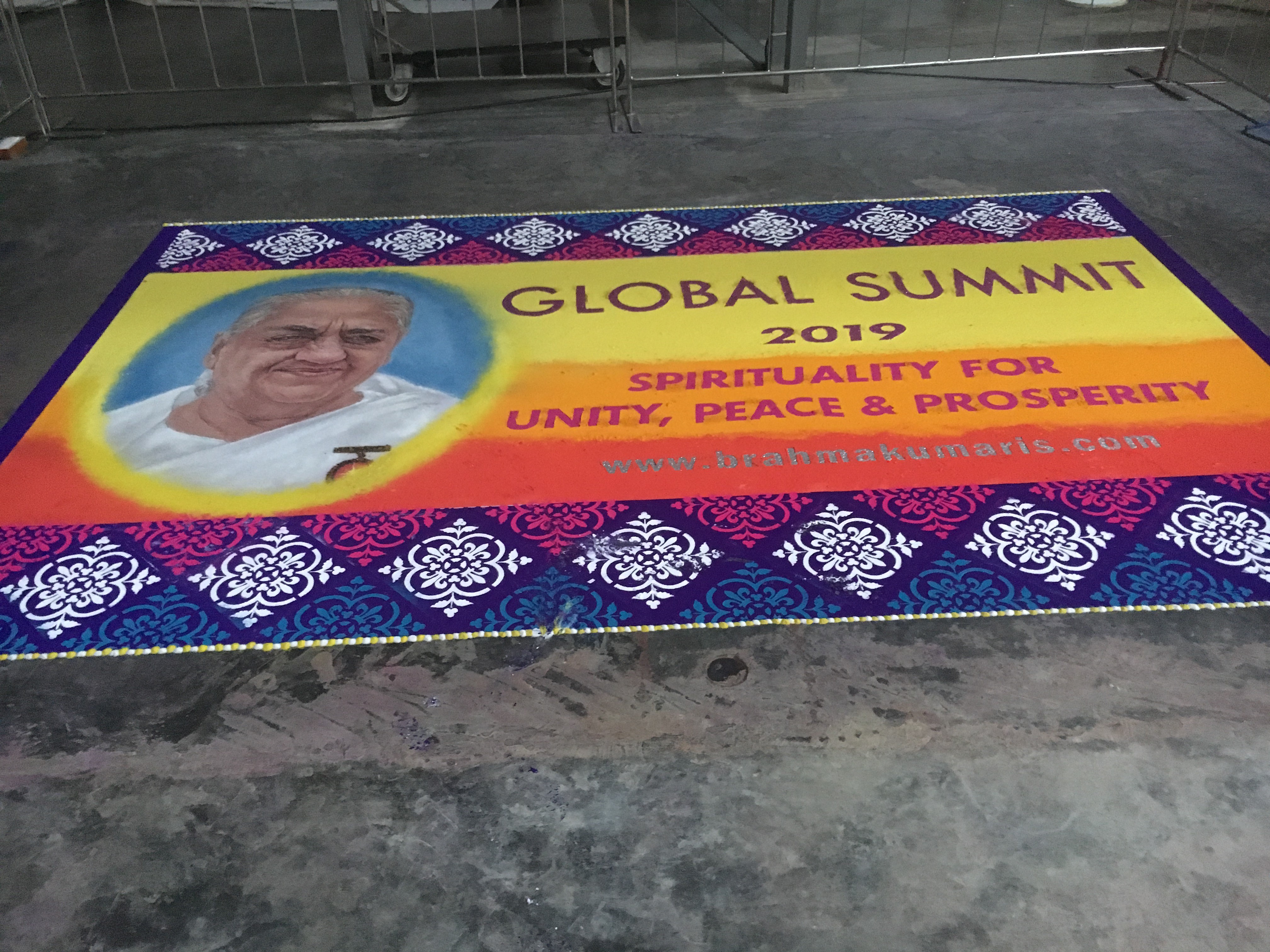Shantivan
Brahma Kumaris
The Abu Road conference grounds are the largest of the Brahma Kumaris’ centers. As a standalone site, Shantivan is over twenty-one hectares, but two additional residential campuses nearby add an additional fourteen hectares to the Brahma Kumaris’ real estate footprint in the area.1 There is also a Brahma Kumaris owned and operated seventeen-hectare Solar Plant and twenty-five hectares of farm fields a few kilometers away, although few if any Brahma Kumaris reside at either site. Shantivan plays host to the largest of the organization’s conferences, among which the most prominent is the Annual Global Peace Summit cum Expo. Aside from an enormous conference hall, an incomplete list of campus facilities include several dining rooms, offices for the organization’s various wings, studio spaces for the Brahma Kumaris radio station (Radio Madhuban, 90.4 FM) and film division (Godlywood Studios), several parks, meditation rooms, a printing press, a confectionery, a series of literature shops (vending exclusively BK publications and sundries), a dispensary, a bus garage, and a warehouse for construction materials.
Transportation Wing
More than the other campuses, Shantivan lends a sense of spectacle to the Brahma Kumaris. The grounds sneak up on visitors such as myself who were ferried by bus from the railway station ten minutes away. Immediately upon my departure from the train car, a man dressed in white greeted me with a smile and an “Om Shanti,” before pointing me toward the station exit. Just outside, a white charter bus emblazoned with Brahma Kumaris decals stood in wait. Once the seats were filled, primarily by others in white garb, the bus grunted to life and began jostling us past the infrastructure of Abu Road, a modest Rajasthani town. Giddy with anticipation to take part in the Annual World Peace Summit cum Expo, the other passengers and I squirmed in our chairs, peeping out of the bus windows to enjoy the September breeze.
Before long the roadside tree-line broke, and an immense maroon gate to our left began to swing inward in the manner of Willy Wonka’s Chocolate Factory, inviting us inside. White buildings lined the horizon, and above them, painted on the most prominent of the stone hills in the distance, was an enormous “Om shanti.” The bus then pulled into its parking spot next to around twenty other transportation vehicles, and we were ferried on foot into the registration office in order to receive our lodging assignments for the next several days. This was the welcome of the Brahma Kumaris’ Transportation Wing, which left me with an impression less of religious pilgrimage and more of resort vacation.
Residential Units
After registration, a series of small vans carried us and our bags to the southwest corner of Shantivan, where the majority of the housing units stood. There is a residential capacity of over ten thousand at Shantivan, and most of the lodgings are modest, dorm-style rooms with thinly padded beds. The unit where I stayed had air conditioning and ceiling fans, but I am unsure whether all units have the former. A key box at the entrance of the building allowed guests access to their padlocked rooms, and keys were to be left there whenever a room’s party left the building. Most international guests stay in a separate VIP housing section on the north end of the campus. My hunch is that these deluxe accommodations feature private rather than shared bedrooms, perhaps with larger bathrooms equipped with inline hot water. All of these facilities are free, although most guests donate a modest sum to their local Brahma Kumaris center for the trip. In turn, these local centers ensure that a proportion of the funds reach the central institution.2
Baba’s Room
One of the first stops visitors make after arrival at Shantivan is to Baba’s Room, a small meditation chamber annexed to Diamond Hall, the main conference space on campus. Situated across from Prakashmani Garden, a memorial park where a beloved sister in the organization was cremated in 2007,3 Baba’s Room is centrally located on campus. On several occasions during my stay at Shantivan, I entered the crimson-lit room and took a seat either on the padded floor or on one of the wooden benches lining the back wall. Along with a handful of other visitors, I would turn my gaze toward the head of the room, where a large backlit portrait of Dada Lekhraj, the founder of the Brahma Kumaris, served as the focus for meditation. Mounted on the frame surrounding this portrait was a red egg-shaped bulb with a pinhole poked through the center, allowing a point of white light to shine forth.
For the Brahma Kumaris, meditating in front of this image is anything but devotion to a charismatic founder as a guru. Rather, they understand this portrait and its crown to represent the quintessential relationship between human and God: the Brahma Kumaris see past Dada Lekhraj and his benevolent gaze, recognizing his and their inner souls as points of light, all connected to that point of light above, which they call Shiv Baba. This room, therefore, is an intimate space wherein the Brahma Kumaris can focus on their personal connection to God as Shiv Baba. Shantivan is not unique in this regard; every Brahma Kumaris center has a room designated as Baba’s Room. Since the Brahma Kumaris emphatically assert that God is not omnipresent, Baba’s Room acts as an important fixture in their centers: it signals the presence of and the means to connect to Shiv Baba.
Diamond Hall
When I arrived at Shantivan for the Annual World Peace Summit cum Expo, the other members of my group were impatient to seat themselves in Diamond Hall to listen to the Plenary Session led by Sister Shivani. Recently equipped with green-colored lanyards and a conference packet given to us by our guide Santosh bhai, we marched toward a row of dark wooden doors, upon each of which a large diamond jewel was painted. Along with droves of other visitors, we were shuffled by ushers toward the appropriate seating areas. Although we were not aware of it at the time, our green-colored lanyards earned us the privilege of sitting at the front of the lay-member section, preceded only by the ordained brothers and sisters and the VIPs.
The conference hall is massive, and can seat thousands at a time. Since the 1970s, the Brahma Kumaris have become an international organization, drawing visitors and support from all over the world. To accommodate guests who cannot understand Hindi, live translations of conference proceedings are conducted from booths overlooking the stage. Modeled after the UN, these booths are linked to designated seating areas equipped with headsets. Announcements made in English from the MC invited guests to tune their headsets to different numbers in order to participate in English, Russian, and several other languages.
Dining Hall
There are several dining halls on the Shantivan grounds, the largest of which is a multistory building with the kitchens on the ground floor. Thousands at a time can dine on three floors, all at no cost to the visitor. There are separate dining facilities for event volunteers, ordained brothers and sisters, and VIP guests, although I saw no difference in cuisine offered from one kitchen to the next. The food is strictly vegetarian, without onion or garlic, conforming to what the Brahma Kumaris understand to be a pure diet. Yet the Brahma Kumaris are not without their indulgences as well – on the second floor, a dedicated “bread, milk, and tea department” serves hot chai, hot milk, and milk coffee (with or without sugar) from 7:30 a.m. to 11:30 p.m. every day.
Radio Madhuban
Recorded and broadcast from studio space at Shantivan, Radio Madhuban is a community-facing radio station licensed by the Ministry of Information and Broadcasting. This means that the station services the general Abu Road area, and its content only minimally touches on Brahma Kumaris teachings. Rather, programming ranges from recorded music to talk shows on various topics including women’s empowerment, health and lifestyle advice, current events, local news, and even a program conducted in the local Mewari dialect (most programming is in Modern Standard Hindi).
Visitors are common to Radio Madhuban, and while most visitors just peep in for station tours, others find their way onto live or pre-recorded programs. For example, from the Delhi-based group that I arrived with, both a woman named Bharti and myself found ourselves on-air during the course of the Global Peace Summit. Bharti appeared as a guest on “Career Options,” a pre-recorded program dedicated to familiarizing young listeners with the intricacies of various professions. During the thirty-minute broadcast, Bharti gave an interview as a Human Resources professional, basing her advice to young listeners on twenty years of experience evaluating the different aptitudes and inclinations of employees.
I appeared on “Yuva Manch,” or “Youth Stage,” a talk show that affords listeners the opportunity to call and participate in topical conversations. The host, a young woman named Ayushi, allowed me to ask listeners how Radio Madhuban had impacted their lives, and she helped facilitate my conversation with listeners from Rajasthan and even the USA, all of whom agreed that Radio Madhuban was a valuable educational resource and means of connecting with the local Abu Road community.
Construction Store
The Brahma Kumaris constitute the largest single organization in the Abu Road area, which is by and large an agrarian community. The presence of the group has thereby affected the local economy significantly. Aside from a growing number of storefronts across the street from Shantivan, which sell Brahma-Kumaris-themed souvenirs and apparel, a large number of the local working class has begun to work directly for the Brahma Kumaris.
Between the campuses at Abu Road and Mount Abu, over three thousand local laborers work to keep the Brahma Kumaris’ facilities in working order.4 Tucked behind the VIP housing on the north end of Shantivan is the storehouse for the construction materials used to make and maintain the campus. Although an inconspicuous building, the Construction Store is relatively well-trafficked; since there is nearly one conference a week throughout the year, constant maintenance and construction is required to keep Shantivan running smoothly.
The shelves of the storehouse are a fascinating index of the amount of labor required to produce the tranquil atmosphere prized by the Brahma Kumaris – evidence of the furiously paddling feet that make the swan appear so graceful to onlookers. There are hammers, trowels, ropes, buckets, paint, steel drums, solder and weld, light fixtures, and even colored sand for the ornate rangolī representations of the late sisters Janki and Prakashmani that flanked the stage in Diamond Hall while I was there.
- These are Manmohinivan and Anand Sarovar. Although primarily residential areas, the Brahma Kumaris’ film division – Godlywood Studios – operates from facilites at Anand Sarovar. ↩
- Another cut often covers the travel expenses of Brahma Kumaris “guides.” Most visitors come as a group from their respective local Brahma Kumaris centers, led by either an ordained Brahma Kumaris brother or sister, or a more experienced lay member. These guides are responsible for ensuring the comfort and positive experience of their charges, especially first-timers. ↩
- See Tamasin Ramsay, Custodians of Purity: An Ethnography of the Brahma Kumaris (PhD diss., Monash University, 2009), 166-71. ↩
- This number includes the laborers who work at Shantivan, Gyan Sarovar, Pandav Bhawan, and the nearby solar plant and agricultural grounds. I imagine it also includes the significant number of primarily female laborers who prepare food, wash dishes, and clean the residential quarters, even if they have little reason to visit the Construction Store. ↩

